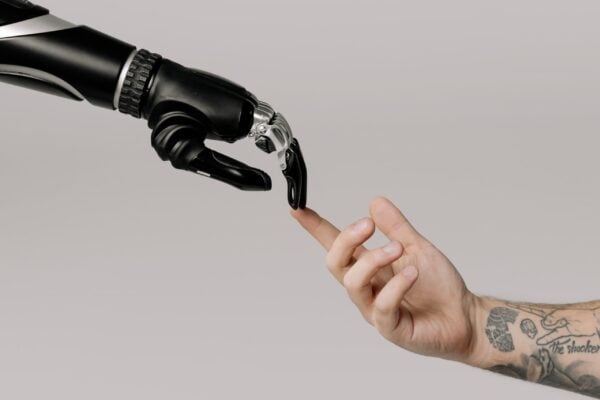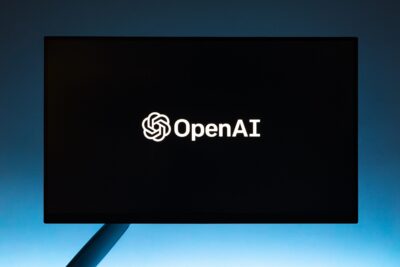A Guide to Leadership Competency Models - SkillSource
What is a Leadership Competency Model? A leadership competency model, also sometimes called a leadership capability model, is a framework that...
5 min read
Justin Albertson : May 5, 2019 3:20:00 AM

ChatGPT has been blowing minds since its release, and for a good reason. It has been applied to tasks with a wide range of complexity. ChatGPT has been used to write everything from hypothetical training situations to entire lesson plans for college professors. The language model has since been featured in dozens of headlines, with some articles making massive claims about the impact ChatGPT will have on our lives. But what exactly is ChatGPT? And how does it differ from other forms of AI that have already been implemented in the workplace? When we asked ChatGPT itself to explain what it is, here is the answer we were given:
“ChatGPT is a large language model created by OpenAI, designed to be able to engage in natural language conversations with humans. It is based on the GPT (Generative Pre-trained Transformer) architecture, which is a type of neural network used for natural language processing tasks such as language generation and understanding.”
Not only is this a remarkably concise explanation of what ChatGPT is, but it is also a perfect example of what makes it unique. ChatGPT can communicate with people using natural language, exactly as people communicate with others. ChatGPT understands grammar, syntax, and pragmatics in a way that is eerily human. It even has a solid grasp of the more nuanced parts of a conversation, such as metaphors and regional colloquialisms. This is a big deal for workers who intend to use ChatGPT in their industry because it means no coding knowledge is necessary to use the language model. ChatGPT has the potential to be the most easily accessible and widely used AI in a variety of industries. So, what does this mean for the professional development and corporate training industry?
ChatGPT is an incredibly cost-effective method of improving the efficiency of corporate training. As it stands, ChatGPT is open to the public, meaning it is entirely free for anyone to use for any purpose. However, there are drawbacks to a publicly accessible model of AI. There are times in the day when ChatGPT’s demand can be so high that the AI will respond slower than usual or be unavailable altogether. Fortunately, OpenAI is already taking steps to remedy this situation. They have released a premium version of ChatGPT that promises consistent response times and guaranteed access to the language model even when demand is high.
The most immediately obvious benefit of ChatGPT is the speed at which it can generate content. Depending on the speed of your internet connection and the amount of traffic the AI is currently handling, ChatGPT can write 500+ words in under 10 minutes. This has significant implications for the professional development industry because professionals can piece together training content more quickly than ever. What’s even more impressive is that all of the content generated by ChatGPT is original, meaning the language model can be used to personalize coaching content based on the user’s written stipulations.
A clear-cut example of this efficiency in action would be in the field of diversity, equity, inclusion, and belonging. This form of professional development usually requires coaches to write mock situations of common workplace issues, such as harassment or inappropriate conversations. While it might take an expert upwards of two hours to draft a well-written hypothetical situation, ChatGPT can complete this task in under half the time. The training expert can then take this script and edit it, so it is perfectly tailored to the training plan at hand.
The benefit of scalability goes hand-in-hand with ChapGPT’s efficiency. When work for one project is completed in record time, professionals can take on additional tasks. Corporate coaches likely won’t have the time to write five personalized training plans in a single day, but they may be able to perfect five different training plans that AI wrote. In this way, ChatGPT can help professional development experts reach a wider audience and have a more considerable impact.

One specific way ChatGPT can be utilized in corporate training is to shorten content and cater it to select groups of trainees. ChatGPT is adept at cutting content down to a word count decided upon by the user. More importantly, ChatGPT can stylize a given piece of text according to the trainee’s experience level. Corporate trainers can provide a completed training program to the AI and ask it to rewrite the content so that it is geared towards beginners or intermediate-level trainees. Translating content for different skill levels makes corporate training more accessible and practical.
Most professional development coaches are not looking for an AI that can perform well in their role. Instead, they are searching for an AI tool that improves their efficiency in their position and allows them to be more productive. Corporate coaches oftentimes run into roadblocks when developing training material that can be difficult to work through. Fortunately, ChatGPT is phenomenal for overcoming writer’s block and similar setbacks. ChatGPT can generate content that acts as a diving board for corporate trainers to jump from. It can write portions of content that coaches are struggling with, create a list of potential solutions to a specific issue, and even rewrite content that corporate coaches intend to repurpose.
While ChatGPT is a potent AI tool, many experts agree it will not replace corporate coaches outright. Instead, it is more likely that the industry will transition away from relying solely on corporate coaches who do not use AI to prioritizing professionals that leverage the power of AI, such as ChatGPT. Currently, ChatGPT has been known to make mistakes that no corporate training professional would. For instance, experts at the Institute of Coaching Studies found that when ChatGPT was asked to generate a bibliography, the algorithm “gave a very convincing list of books that had actually never been published.” This is a major mistake that a human coach would never make because of the ethical concerns involved.
Another noteworthy limitation of ChatGPT is its inability to access the internet for new information. As mentioned earlier, ChatGPT is a generative pre-trained transformer language model. ChatGPT’s knowledge base might be unfathomably large, but it is finite and is not updated continually. This means that as the professional development and corporate coaching industry grows, ChatGPT’s knowledge of it remains the same. One of the primary advantages human coaches have over AI-powered coaches is our ability to find new, trustworthy information and implement it in our current practices.
Large language models like ChatGPT might be everybody’s new favorite toy, but that doesn’t mean they are without flaws. One of the most prominent issues the technology is yet to overcome is the inherent bias they show in their responses. Even OpenAI’s CEO, Sam Altman, has admitted that ChatGPT has “shortcomings around bias.” Many experts believe that this bias against underrepresented groups of individuals is a result of the data used to train the AI. Many of these AI applications are trained using mountains of text that have been scraped from the internet. Unfortunately, size does not guarantee diversity in the case of the internet because many minority groups have more limited access to the internet. Often, women and people of color are underrepresented in the material used to train AI, and the AI will reflect whatever prejudices are shown in the source material.
The biases AI pick up from their training materials have harmful repercussions in the real world. For instance, language models similar to ChatGPT are used in recruitment applications that help companies decide who is a good candidate for a job and who is not. But if the AI isn’t guided by a DEIB professional, then it will likely perpetuate the same prejudices it is meant to help reduce. This is another reason why it is crucial to work with professionals who understand how these AI tools work and how they can best be implemented without worsening discrimination.
AI tools such as ChatGPT might revolutionize the way we approach corporate training, but they will only be as effective as the professional that wields them. Instructional design experts and corporate coaches are in the best position to leverage ChatGPT and other language models. They have the experience needed to reflect upon training content and improve it at every step. Our consultants embrace innovative and imaginative applications like OpenAI’s ChatGPT in conjunction with tried and true techniques to deliver engaging learning experiences and propel outcomes. Contact us today to speak to a SkillSource Learning Partners representative about how our corporate coaches and instructional designers can help you harness the power of AI.

What is a Leadership Competency Model? A leadership competency model, also sometimes called a leadership capability model, is a framework that...

Enterprises are dealing with a highly volatile market in 2021, and resources are scarce. With resources being the most expensive elements of any...

Many enterprises are abandoning more traditional learning methods in favor of social learning strategies that utilize online learning, mentorship and...